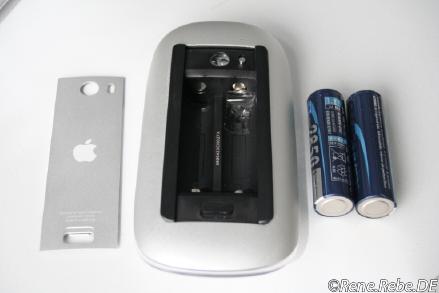The Apple Mac OS mouse cursor speed is one of those “love it, or hate it” domains. Personally I find the default speed already way too slow, always falling asleep on a fresh Mac install, or at the login window.
The max used to be barely endurable, so far, e.g. with the Mighty Mouse - until I got the Magic Mouse the other day. Directly compared the Magic Mouse moves way slower with at the same setting. No idea how Apple got this inconsistency in their own, few products. I also have no idea why mouse pointer movements can possibly be that slow. Not only the default, but also the maximal configuration value, …
Fortunately there is no limit behind the back, so you can tune it with:
defaults write -g com.apple.mouse.scaling -float 8
The 10.6.2 maximal UI value appears to be 3, …
Update: Some more review: The slowness aside, the Magic Mouse is pretty decent. The biggest improvement over the Mighty Mouse is the touch sensitive cover. The former microscopic scroll ball was prone to accumulate dirt inside and near to impossible to clean. (To really clean and remove dust and dirt from the ball axes one hat to cut(!!!) the glued mouse housing and disassemble it fully, …). So from this usability standpoint it’s a great improvement. The major downside is, that only a Bluetooth version is available. I personally find the weight of the two AA batteries too hefty - that was also already a problem with the Bluetooth Mighty Mouse. For my excessive workdays I would prefer a lighter, cabled version to reduce the wrist stress, …
However, while the “magic” features do not appear to work (out of the box) under 10.5, the pointer tracking appears to be way faster – 10.6 might artificially slow the magic mouse tracking down, … ?!
Yep, I just downloaded the Wireless Mouse Software Update 1.0 for Leopard and the Magic Mouse becomes as slow as under Snow Leopard, 10.6. Expands the Preferences, brings battery level indicator to the menu extra. Actually some 30MB download, unpacks to nearly 100MB. Just for a mouse driver! Well, the useless tutorial videos blow it up significantly, … Wished OS X would stay as lean and clean as it was in the beginning.
Update 2: Under normal, office-use conditions, the battery life with the shipped alkaline battery is just about a month. To safe the environment I always only use rechargeable batteries in any device after the first batch of shipped batteries died out. On an mid-quality (2400mHh NiMh Ansmann “Photo”) batteries I already had in the shelf it lasts way less, 1-2 weeks of busy office use :-( Guess I need to get a pair of higher capacity, quality, more expensive NiMH or even check out those new kinds of NiZN batteries. Hopefully those do not burn out the Magic Mouse :-)
Update 3: As the Ansmann 2400 mAh “Photo” NiMH batteries drained out so quickly, I got a pair of Ansmann 2850 mAh NiMH. However, I was surprised the Magic Mouse did not turn on at all!!! After a quick investigation it turned out that the surrounding plastic of the holder where the batterie +pole goes in is a little fat. The hole is simply too tiny for that pair of batteries!!! Who would have believed that, …
To: Apple Inc.: In the future please but a little more thinking into your basic, plastic structure. This is so unnecessary incompatible, most other equipment has just a rectangular area with a metal latch not posing exactly such problems, …
To compensate I placed a shim into the hole:

Attention: Due to the holes in the plastic foundation the shim can easily slip into the mouse, and you need to be pretty patient to shuffle it out again! My tip: By applying some magic -gravity-, holding the mouse up, into the air, with the bottom to the ground let’s the gravity magically support your shuffle game, …
To avoid exactly this in the future, I simply put adhesive foil (sticky tape) over the holes. In case you need a similar mod, maybe a good idea for you to do upfront to avoid slipping something into the mouse case in the first place.

